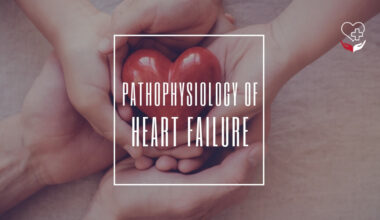This post by Daily Human Care is all about Varicose Vein Treatment. Let’s start!
Table of Contents
Varicose Vein Treatment
Millions of people worldwide suffer from varicose veins, a prevalent condition. While they are often harmless, they can sometimes cause discomfort and even pain. Various treatment options are available for varicose veins, but varicose veins treatment cost can vary widely depending on several factors. This post will explore the factors affecting the varicose vein treatment cost.

The severity of the Condition
The severity of the varicose veins is one of the primary factors affecting the treatment cost. The more severe the varicose veins, the more extensive the treatment will be, and the higher the cost. Mild varicose veins may only require simple lifestyle changes, such as exercise or compression stockings, which can be relatively inexpensive. However, more severe cases may require surgery or other more invasive treatments, which can be significantly more costly.
Type of Treatment
The type of treatment used to treat varicose veins can also impact the cost. Several treatment options are available, including sclerotherapy, laser treatment, and surgery. Sclerotherapy is a non-invasive treatment involving injecting a solution into the veins to collapse them, often the least expensive option. Laser treatment involves using a laser to close off the veins and is generally more expensive than sclerotherapy. Surgery, such as vein stripping, is the most invasive option and is typically the most expensive.
Geographic Location
Varicose veins treatment cost can vary depending on the geographic location of the treatment centre. Generally, treatment in urban areas tends to be more expensive than in rural areas. There is more competition in urban areas, and treatment centres must pay higher overhead costs, such as rent and salaries. For example, the cost of this treatment in India can range from Rs. 45,000 to Rs. 70,000, with an average cost of around Rs. 57,500, which covers expenses such as hospitalisation, consultation, and post-operative care.
Insurance Coverage
Varicose vein treatment is a medical procedure that can be expensive and vary depending on your insurance coverage. Some insurance plans cover the entire cost of treatment, while others provide limited coverage or do not cover the treatment at all. Even with insurance coverage, there may be additional out-of-pocket expenses, such as copays, coinsurance, or deductibles. These expenses can significantly increase the overall cost of treatment, making it difficult for some individuals to access the care they need. It’s important to carefully review your insurance coverage and understand any potential out-of-pocket costs to make informed decisions about your healthcare.
Experience and Qualifications of the Practitioner
When seeking varicose vein treatment, it’s crucial to consider the experience and qualifications of the practitioner who will perform the procedure. Due to their expertise and specialised training, experienced and qualified practitioners may charge higher fees for their services. However, choosing a more experienced and qualified practitioner often leads to better outcomes and lower overall costs in the long run.
A practitioner with more experience and qualifications will likely better understand the underlying issues that cause varicose veins, leading to a more accurate diagnosis and effective treatment plan. Moreover, a skilled practitioner may be more efficient in performing the procedure, resulting in a shorter recovery time and fewer complications. By contrast, choosing a less experienced or qualified practitioner may result in suboptimal outcomes, leading to additional treatment costs and prolonged recovery time.
Number of Sessions
The number of treatment sessions required to address varicose veins is another factor that can affect the cost of treatment. More severe cases of varicose veins typically require more sessions to achieve optimal results, which can increase the overall cost of treatment. The number of sessions required will depend on the specific treatment method and the severity of the condition. For example, endovenous laser treatment (EVLT) typically requires one or two sessions, while sclerotherapy may require several sessions, even for milder cases. The number of sessions needed for each patient will vary based on their individual condition, which means that the overall cost of treatment may also vary. It’s important to discuss the number of sessions required for your specific condition with your healthcare provider to understand the potential cost of treatment.
Overall Health
The patient’s overall health is another factor that can impact the cost of varicose vein treatment. Patients with underlying health conditions, such as diabetes or heart disease, may require more extensive treatment to address their varicose veins. These patients may also require more frequent follow-up appointments to monitor their condition, which can increase the overall cost of treatment. Additionally, patients not in good overall health may be at a higher risk of complications during or after the treatment, which can also increase the cost of care. It’s important to discuss any underlying health conditions with your healthcare provider to ensure that the treatment plan is tailored to your specific needs and to understand any potential cost implications. Taking steps to maintain good overall health can also reduce the risk of complications and lower the overall cost of treatment.
Varicose veins can be a nuisance for many people, but treatment options are available to alleviate symptoms and improve the overall quality of life. Varicose vein treatment cost varies based on condition severity, treatment type, location, insurance, practitioner qualifications, number of sessions, and patient health. It is essential to discuss these factors with a healthcare provider before deciding on a treatment plan to ensure that the best possible outcome is achieved at a reasonable cost.



